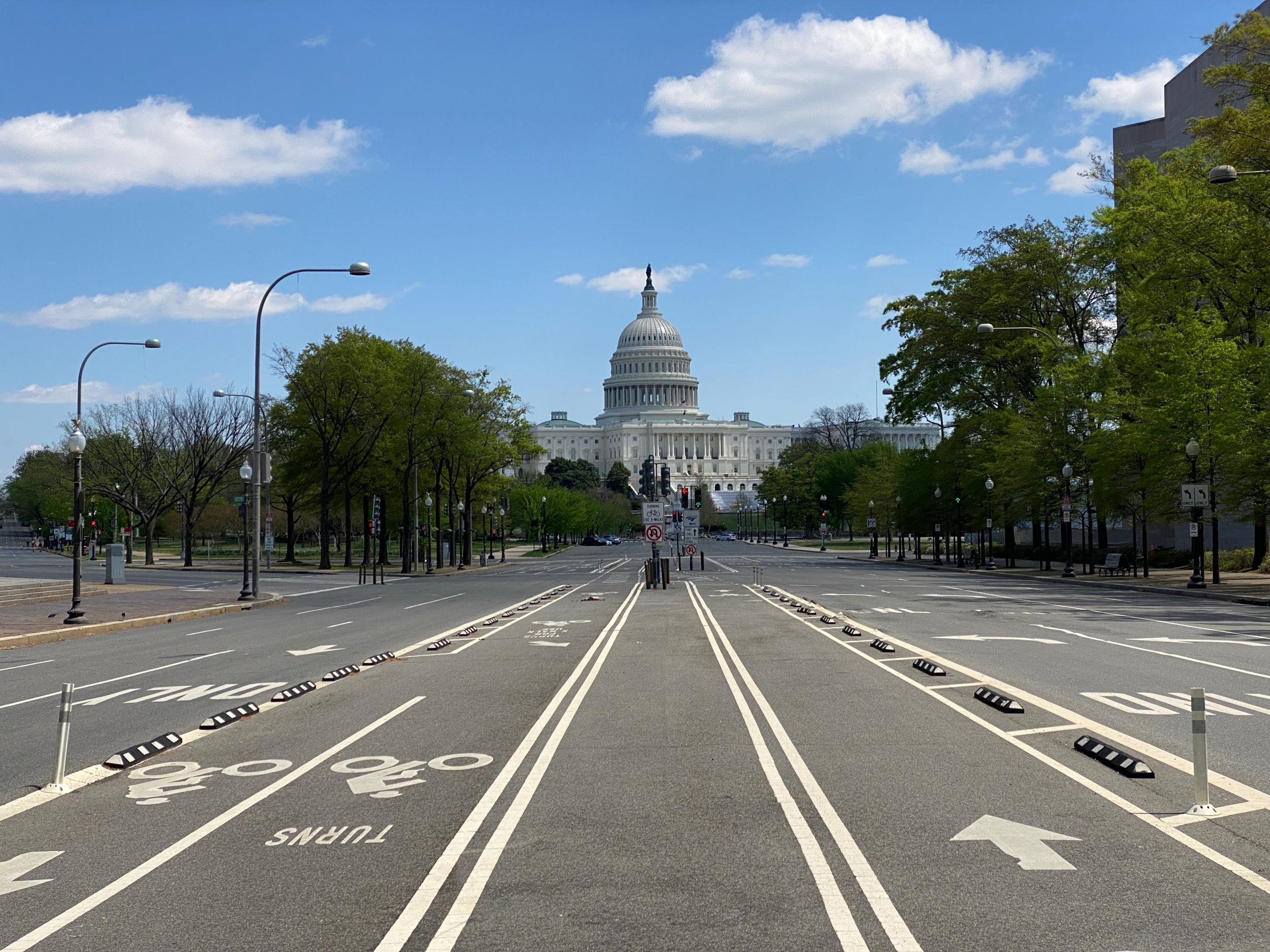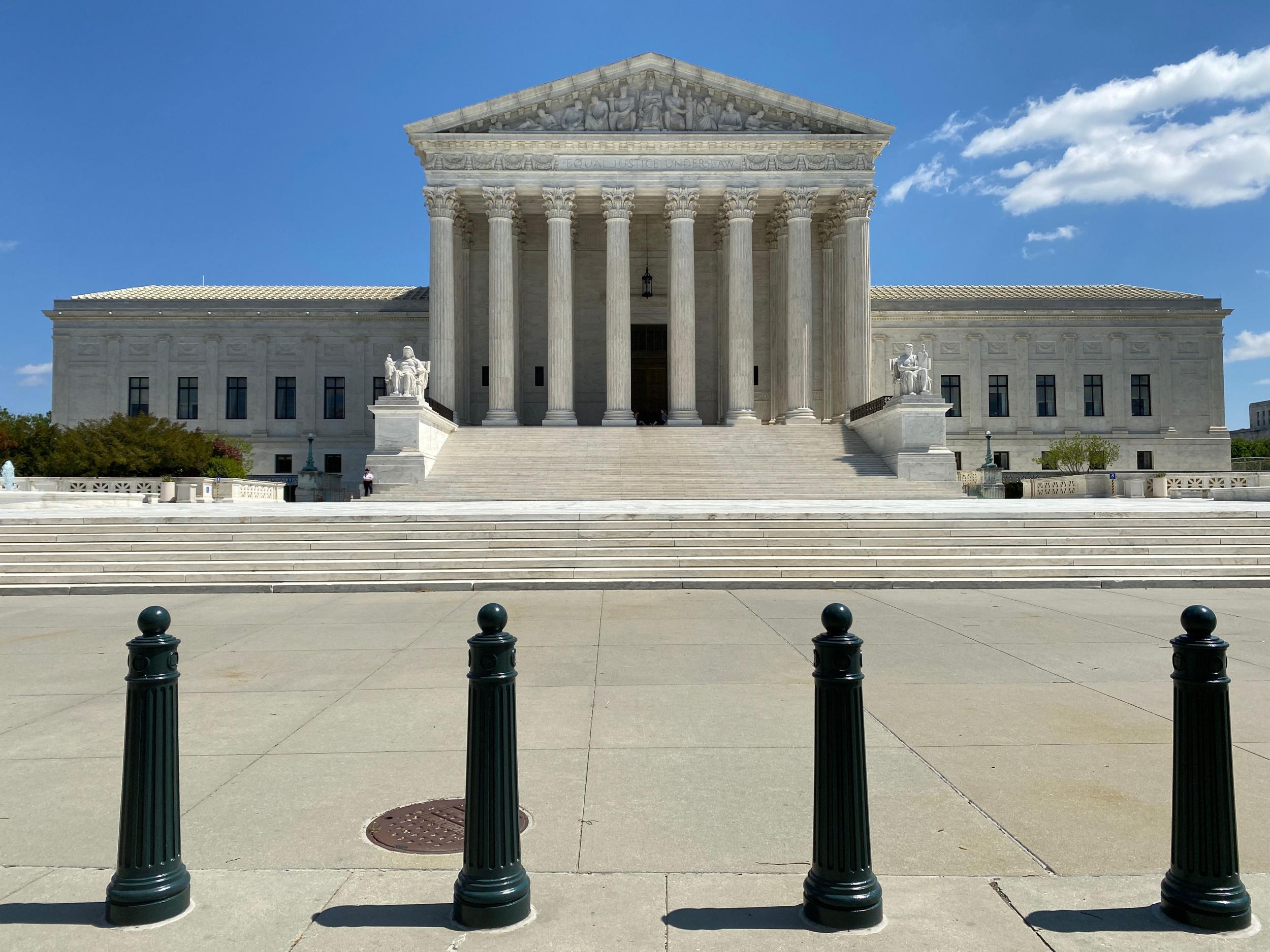‘It’s not as easy as you think’: Officials predict reopening congress after coronavirus lockdown will be a complicated task
This isn’t at all like reopening a corporate headquarters in a city centre or a regional plant in a suburban office park
Your support helps us to tell the story
From reproductive rights to climate change to Big Tech, The Independent is on the ground when the story is developing. Whether it's investigating the financials of Elon Musk's pro-Trump PAC or producing our latest documentary, 'The A Word', which shines a light on the American women fighting for reproductive rights, we know how important it is to parse out the facts from the messaging.
At such a critical moment in US history, we need reporters on the ground. Your donation allows us to keep sending journalists to speak to both sides of the story.
The Independent is trusted by Americans across the entire political spectrum. And unlike many other quality news outlets, we choose not to lock Americans out of our reporting and analysis with paywalls. We believe quality journalism should be available to everyone, paid for by those who can afford it.
Your support makes all the difference.The struggle to reopen Congress is more complex than just monitoring how far the coronavirus curve has been bent towards containment, then recalling more than 500 lawmakers to the Capitol.
This isn’t at all like reopening a corporate headquarters in a city centre or a regional plant in a suburban office park, where employees are travelling a relatively short distance to their workplace.
Instead, Congress functions much more like a large college campus. More than 10,000 employees, on a normal day, are spread across the Capitol, seven office buildings for lawmakers and committees, the Capitol Police headquarters, the Library of Congress and a dormitory for Senate pages.
Then there are the more than 15,000 tourists a day who would visit the complex during the peak springtime season. That practice has been prohibited since 13 March, and few leaders are even contemplating when the general public would be allowed to return.
The most basic duties – 100 senators showing up for a roll call, or up to 435 members of the House voting – are inherent violations of federal health guidelines that say groups should be limited to no more than 10 people.
And then there are the dozens of members of the House who, rather than rent or own a private apartment, live in their offices. Each morning these lawmakers use showers in the House gym to get ready for that day’s work representing their constituents.
Without access to the House gym, these lawmakers have nowhere to shower each morning, and all gyms in Washington have been ordered closed through District of Columbia Mayor Muriel Bowser’s emergency orders shuttering all nonessential businesses.
On Wednesday, Bowser extended that order until at least 15 May, which is almost two weeks beyond what congressional leaders have set as their aspirational return to the Capitol.

Those leaders are now recognising just how daunting the task is to try to get Congress back to any semblance of normalcy.
“People think we can do Congress by Zoom. Zoom is a Chinese entity that we’ve been told not to even trust the security of. So there are challenges, it’s not as easy as you would think,” House Speaker Nancy Pelosi, D-Calif., said Tuesday night on MSNBC’s “All In With Chris Hayes.”
The Silicon Valley company, founded by a Chinese entrepreneur, has come under scrutiny for its security measures. Pelosi said a more detailed technology report would be delivered during a House Democratic caucus call Thursday.
House Majority Leader Steny Hoyer, D-Md., who is in charge of the chamber’s scheduling, acknowledged Wednesday that some things would have to change to make up for the lost time while Congress is shut down. He said lawmakers will go beyond the typical workweek of starting Monday evening and finishing Thursday afternoon.
“Once we’re back, the schedule will likely change to accommodate the work we have to get done,” Hoyer told reporters during a conference call, predicting some recess weeks for lawmakers to work in their districts would be cancelled. “They’ll have less time at home, less time with their constituents, but more time acting on behalf of their constituents on work that we need to do.”

To be sure, many members of Congress say they are working harder than ever before, just doing so from their homes trying to help the myriad local hospitals dealing with the deadly coronavirus and small businesses struggling through the economic crisis.
These constituent services have consumed their daily lives, but there remains the need to continue to work on legislation, both bills related to the coronavirus and others dealing with normal business like funding the federal government.
Committee chairmen have been holding teleconference meetings with rank-and-file lawmakers, but long-standing rules forbid actually holding formal hearings and votes on legislation from remote distances.
To change those rules, the full House and Senate would have to return to the Capitol, hold a debate and then vote on such changes. Hoyer said Wednesday that no such full return can happen until the “advice of the health-care community” is that doing so is safe.
Whenever that time comes, Hoyer’s planned five-day workweek in Washington requires lawmakers to travel from near and far, most on planes and trains, to get to the Capitol.
Any return to normalcy would then involve several hundred lawmakers trekking back home after five days in Washington, then repeating that exercise after a weekend at home.
That would place hundreds of lawmakers on two flights a week, the type of regular travel that many are reluctant to even think about now because of the constant exposure that would entail.
“I’m actually more concerned about members of Congress spreading this back in their district,” Rep. Mario Diaz-Balart, R-Fla., said in a recent interview.
Diaz-Balart, who contracted Covid-19 in mid-March, spent three weeks quarantining himself in his Capitol Hill apartment before he returned to Florida. With constant travel to and from Washington, even seemingly healthy lawmakers could be asymptomatic vectors of the virus.
“That’s the last thing you want,” Diaz-Balart said.
Some lawmakers live in group houses, which puts them in close quarters just like college students. House Minority Whip Steve Scalise, R-La., has lived almost a decade in a townhouse with three other lawmakers.
Sen. Christopher Coons, D-Del., has an even trickier routine. Every day he usually takes Amtrak from Wilmington, North Carolina, to Washington, then back at night – the type of travel on public transit that seems more dangerous than ever. On some occasions, when he has to stay overnight, Coons will bunk up with a fellow senator who has an extra room in their home near the Capitol.
Beyond the lawmakers are the more than 13,000 aides who work for them, some of whom are back home in their states. Since Congress finished a $2tn rescue package in late March, almost every staffer has been working from home, leaving the Capitol complex a bit of a ghost town.
Many office doors have signs telling cleaning crews not to enter because no one is working there.
Of the Senate’s dozen cafeterias and coffee shops, just one carryout remains open, mostly serving the police who still guard the buildings. In a cramped basement room, just four customers are allowed in at a time.
Any return to normalcy, just bringing back the lawmakers and a few staff each to the Capitol, would be an exponential growth from the current occupancy and likely require even more support staff to help operate dining areas and cleaning.
Leaders, for now, have few answers, other than hoping medical research can come up with a solution sometime soon.
“We need to get the work of the American people done,” Hoyer said.
The Washington Post
Subscribe to Independent Premium to bookmark this article
Want to bookmark your favourite articles and stories to read or reference later? Start your Independent Premium subscription today.

Join our commenting forum
Join thought-provoking conversations, follow other Independent readers and see their replies
Comments